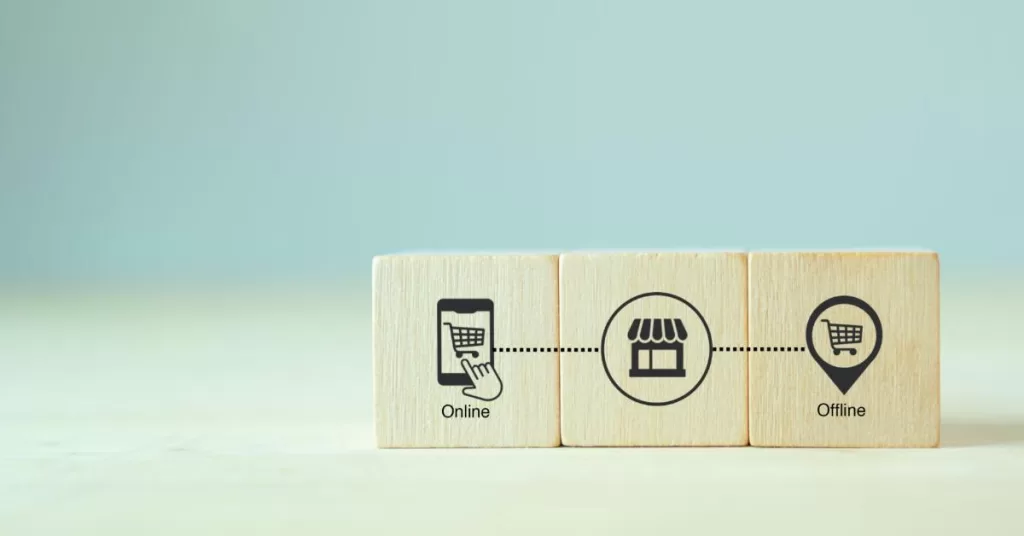Multichannel retailing is a strategic way to sell goods and services which covers a variety of channels – digital and physical. This approach allows any business to tap into a sizeable and broader audience.
Because people’s online and offline behavior is constantly changing, you need to adapt the way you are selling your products, as well. This is a hard task as the number of channels you need to be on increases with every newly launched social platform, marketplace, or ad network.
So, let’s see how you can start using, mixing, and testing these channels to improve your business.
Why Multichannel Retailing Matters
Multichannel retailing is becoming more important than ever for ecommerce businesses. Here are some of the reasons why you should consider implementing such a strategy.
Increased Customer Reach
When you sell your products across many channels, your customer pool can become far-reaching and diversified. Customers might spend their time in any number of places, so it’s key for you to reach them in all the places they might hang out in.
This will help you expand your customer base locally and internationally. And you will have increased visibility regardless if people prefer in-store browsing, online shopping, or social media interactions.
Enhanced Customer Experience
A good customer experience will most likely lead to brand loyalty and advocacy. And these are the things that will set you apart from your competition.
By giving your customers different ways they can interact with your business, and making their purchases as frictionless as possible, you can offer the tailored experience they are longing for.
Boosted Sales and Revenue
With many convenient ways of buying your products, you are encouraging more sales. And this will boost your revenue.
There is also a potential downside to keep in mind: profit margins. But we will talk a little more about that later on.
Stronger Brand Awareness and Loyalty
A well-coordinated multichannel retail strategy will increase your visibility and will increase customers’ loyalty to your brand.
If you manage to win their trust, they will come back for repeat purchases and recommend your products to their friends, family, or audience.
Key Components of Multichannel Retailing
It all sounds nice, but what the hell is this approach? Well, it is a whole way of selling, but it can be broken down into a few facets.
E-commerce
This is an obvious one. We can’t talk much about online selling without bringing up the online shop. Here, you want to make sure you have the basics covered.
User-Friendly Online Store: an ugly website, full of pop-ups trying to get people’s email addresses before they have even browsed one product will not do great nowadays. Luckily, there are platforms that will help you have a great-looking store that loads fast and has a great checkout page (e.g. Shopify).
Effective Product Presentation: you need to have excellent product pages or product landing pages to earn the sale you’re looking for. So make sure that you use high-quality images, detailed descriptions, and clear pricing. The more information you offer, the better the chances you have for a conversion.
SEO: a lot of ecommerce websites don’t know how important SEO is for their shop. But if you give it some attention, you will get highly profitable results.
Payment Options: people use different payment methods. So if you want to have more conversions, or if you want to successfully expand internationally, look into providing the payment options your audience prefers.
Physical Stores
Memorable In-Store Experience: try to create a welcoming environment where people want to stay longer and explore your products. Think of what Starbucks did. They don’t offer high-quality coffee – but they offer an experience that people love and makes them come back for more. The same thing goes for casinos (and maybe you can also find better coffee there).
Strategic Store Layout: improve your customers’ experience by having a logical layout, that shines a light on the key products (even literally), and encourages people to explore.
Excellent Customer Service: this should go without saying, but your customer-facing employees should be dedicated to customer satisfaction.
Social Media
Strong Social Media Presence: connect with your audiences and interact on social media. Be bold and don’t be afraid to try out new things. Just look at how Wendy’s and Duolingo are nurturing their online presence.
Customer Engagement: don’t just post things online and expect people to interact with your business. Use social media to reply to posts, launch polls, quizzes, and even challenges.
Targeted Social Media Advertising: obviously, organic social media marketing will not cut it. If you want to reach more people and broader audiences, you will need to use social ads to target them and show them your products.
Mobile Commerce
Responsive Mobile Websites and Apps: more and more traffic is moving towards mobile phones and tablets. So, you will need to make sure your website is optimized for them. Think about loading speeds, responsiveness, and navigation. Also, if your budget allows you to, you can also test developing your own mobile app
.Simplified Mobile Checkout: if your goal is to have a simple checkout on desktop, you need to make it even simpler for mobile. This will reduce the cart abandonment rate, especially if people are placing orders when they might be on the go.
Mobile Marketing Strategies: if you want customers’ phone numbers or if they have installed your app, you can use SMS marketing or push notifications. These can be powerful ways of telling them they left something in their cart, or if you have launched new products they might be interested in.
Challenges and Best Practices in Multichannel Retailing
Well, even though multichannel retailing is a great way of scaling your business, it also comes with drawbacks. Here are some of the most common things I hear from ecommerce people:
Maintaining Consistency
It is hard to be present on so many channels and make sure that your branding and messaging are spot on. To do this, you will need to have all the stakeholders involved in alignment meetings.
They all need to move along as one squad. Otherwise, the customers will pick up on the inconsistencies and your brand image will suffer.
Managing Inventory and Order Fulfillment
On the logistical side of things, when you sell on three, four, five, or more channels, it is hard to keep track of everything. Especially if you have to log into each platform to check the sales and update your store’s information.
Besides that, you might also run into overselling issues which will decrease customer satisfaction and hurt their experience.
Providing Great Customer Service
Again, the same issue. When people contact you via phone, email, DMs, social media posts, letters, carrier pigeons, etc. it is hard to manage all the support.
Especially when they expect to have immediate responses and fast solutions to their problems.
It can become expensive
Whenever you sell on a channel, there are costs associated with it. From the new processes you have to implement internally, the platform’s commissions, and potentially new software tools, the costs ad up quickly.
This can hurt your profit margins making the revenue increase worthless.
How to overcome these issues?
Ensure that you can have everyone aligned on your branding and messaging. Have guidelines in place, and let them be creative together.
There will be times when they will make mistakes, but if they can reflect on them and see why something happened, they will work better together.
When it comes to things that can be automated, automate as much as possible. If you can use a tool to synchronize your orders, returns, and refunds from third-party platforms, use it.
If you can implement a chatbot to answer or filter customer complaints and questions, use it. This will save your team a lot of time.
Lastly, do not try to implement everything at once. Start small and build up from there. If you only sell your products in your online shop, try getting them up on a marketplace. Once that one is set up and running properly, set up another channel.
This is not a sprint. It is a marathon. It doesn’t matter if you can get on all the platforms fast. It only matters that you can sell your products on them profitably.
Future of Multichannel Retailing
As technology is evolving, so does the future of multichannel retailing. And this will shape the consumer’s behavior. And the difference between you and your competitors will be decided based on who can manage the changes better. Let’s look at some technologies that will most likely happen in the future.
Voice Commerce: people are already using devices like Alexa and Google Home to place orders. So, maybe there will also be some SEO or paid options to boost sales in the future.
Augmented Reality (AR) and Virtual Reality (VR): this is already becoming more and more popular. Even with the big failures like the Metaverse and other VR concepts, the technology is already used in ecommerce. Take for example a Dutch electronics company: Coolblue. They are already offering their clients the possibility to check how different-sized TVs will fit in their homes using AR.
Artificial Intelligence (AI): I know, you’ve heard a lot about AI in the past few years. But by now, it is a certainty that it will become more involved in people’s lives. And it is already used a lot by ecommerce companies for chatbots, marketing, sales, product recommendations, business analytics, and more.
So, if you want to stay ahead you will need to keep track of all the market trends, changes in consumer behavior, and the latest technologies.
Also, you want to make sure that your teams are agile enough to test everything quickly and foster a growth mindset.
Conclusion
The competitive environment of ecommerce demands businesses to implement new strategies to succeed. One of these strategies is multichannel retailing. But this is not a one-size-fits-all solution and it must be implemented in a customized way.
You need to understand the different channels, how your audiences are using them, and if it makes sense to have your products there.
However, when done right, multichannel retailing can boost your brand awareness, brand loyalty, revenue, and the bottom line.



